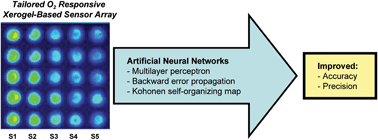Tailored xerogel-based sensor arrays and artificial neural networks yield improved O2 detection accuracy and precision
Abstract
The objective of this research is to develop arrays of tuned chemical sensors wherein each sensor element responds to a particular target


 Please wait while we load your content...
Please wait while we load your content...